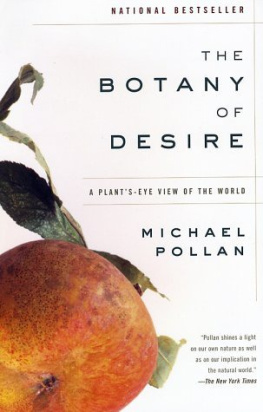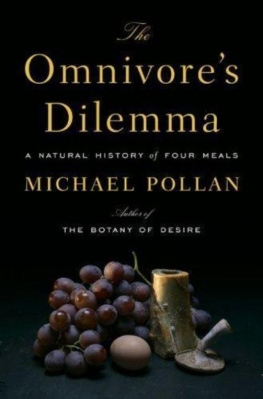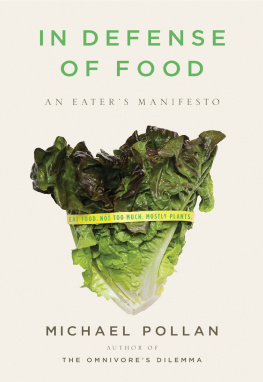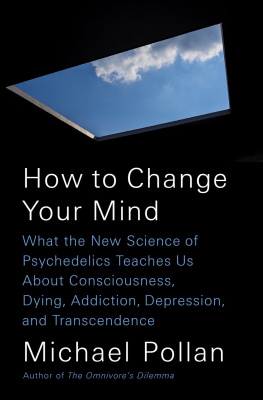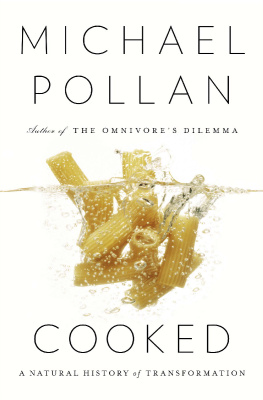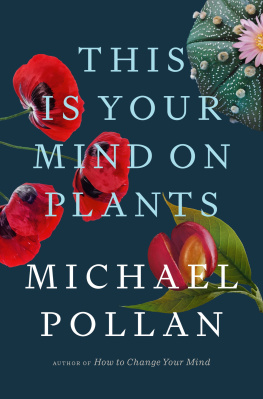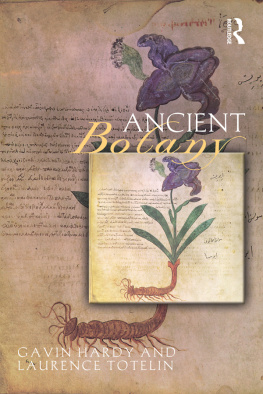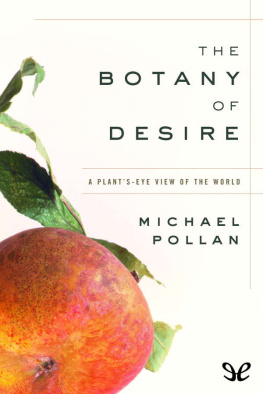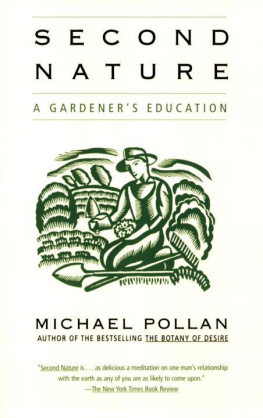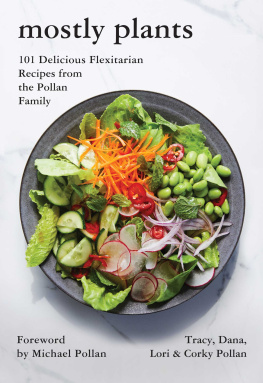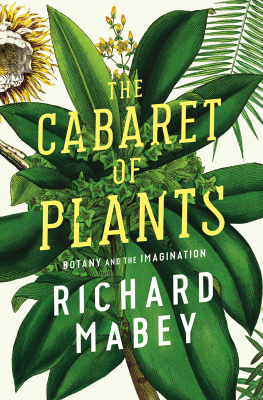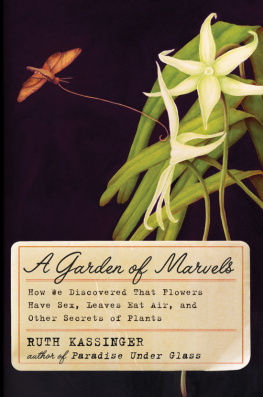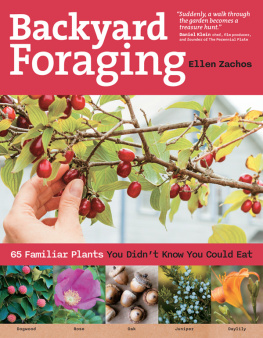ALSO BY MICHAEL POLLAN
Second Nature: A Gardeners Education
A Place of My Own: The Education of an Amateur Builder
THE
BOTANY
OF
DESIRE

RANDOM HOUSE
NEW YORK
Copyright 2001 by Michael Pollan
All rights reserved under International and Pan-American Copyright Conventions. Published in the United States by Random House, Inc., New York, and simultaneously in Canada by Random House of Canada Limited, Toronto.
R ANDOM H OUSE and colophon are registered trademarks of Random House, Inc.
Library of Congress Cataloging-in-Publication Data
Pollan, Michael.
The botany of desire : a plants-eye view of the world / Michael Pollan.
p. cm.
Includes bibliographical references (p. ).
eISBN 1-588-36008-3
v1.0
1. Human-plant relationships. I. Title.
QK46.5.H85 P66 2001 306.45dc21 00-066479
Random House website address: www.atrandom.com
Book design by J. K. Lambert
For my parents, who never doubted (or, if they did, never let it show); and my grandfather, with gratitude
CONTENTS
ACKNOWLEDGMENTS
I had a great deal of help in the making of this book at every step of the way. My thanks first to all the people who gave so generously of their time and knowledge while I was reporting and researching the project; their names appear in the Sources.
Ever since I started writing books a dozen or so years ago, Ive had the privilege and even greater pleasure of working with Ann Godoff; indeed, by now I cant imagine writing a book without the net of her wisdom, trust, and friendship. My literary agent, Amanda Urban, has also been there since the beginning. She knew before anyone else that The Botany of Desire was the book I should be writing, and, straight through, her judgment on all matters has been indispensable.
Mark Edmundson has also had a hand in all three of my books, though for no other reason but friendship. He read the manuscript with great care and intelligence, parts of it more than once, and every page he touched he made better. Just as important, though, have been the sympathetic ear and priceless reading suggestions he offered along the way. Ive been incredibly fortunate, too, to have the gifted editorial eye of Paul Tough, who has gracefully morphed from student to teacher; his suggestions were invaluable. I also owe a large debt of gratitude to Mardi Mellon, at the Union of Concerned Scientists, who generously brought her scientific eye to bear on the manuscript, saving me from all manner of embarrassment; whatever errors remain, however, are mine alone.
My initial forays into the worlds of marijuana-growing and genetically engineered potatoes were sponsored by The New York Times Magazine ; heartfelt thanks to Gerry Marzorati, Adam Moss, and Jack Rosenthal for their unstinting support and encouragement, as well as to Stephen Mihm for his stellar research assistance. Carol Schneider, Robbin Schiff, Benjamin Dreyer, Alexa Cassanos, and Kate Niedzwiecki have been invaluable allies, as are, always, Jack Hitt, Mark Danner, and Allan Gurganus. Thanks also to Isaac Pollan for his encouragement and, on the bad days, his understanding and comfort.
And finally, to Judith, who really comes first, because without her eye, ear, wisdom, support, patience, encouragement, discernment, foresight, confidence, companionship, judgment, clarity, humor, and love, none of this would ever have gotten done.
Cornwall Bridge, Connecticut
October 2000
INTRODUCTION
The Human Bumblebee
The seeds of this book were first planted in my gardenwhile I was planting seeds, as a matter of fact. Sowing seed is pleasant, desultory, not terribly challenging work; theres plenty of space left over for thinking about other things while youre doing it. On this particular May afternoon, I happened to be sowing rows in the neighborhood of a flowering apple tree that was fairly vibrating with bees. And what I found myself thinking about was this: What existential difference is there between the human beings role in this (or any) garden and the bumblebees?
If this sounds like a laughable comparison, consider what it was I was doing in the garden that afternoon: disseminating the genes of one species and not another, in this case a fingerling potato instead of, lets say, a leek. Gardeners like me tend to think such choices are our sovereign prerogative: in the space of this garden, I tell myself, I alone determine which species will thrive and which will disappear. Im in charge here, in other words, and behind me stand other humans still more in charge: the long chain of gardeners and botanists, plant breeders, and, these days, genetic engineers who selected, developed, or bred the particular potato that I decided to plant. Even our grammar makes the terms of this relationship perfectly clear: I choose the plants, I pull the weeds, I harvest the crops . We divide the world into subjects and objects, and here in the garden, as in nature generally, we humans are the subjects.
But that afternoon in the garden I found myself wondering: What if that grammar is all wrong? What if its really nothing more than a self-serving conceit? A bumblebee would probably also regard himself as a subject in the garden and the bloom hes plundering for its drop of nectar as an object. But we know that this is just a failure of his imagination. The truth of the matter is that the flower has cleverly manipulated the bee into hauling its pollen from blossom to blossom.
The ancient relationship between bees and flowers is a classic example of what is known as coevolution. In a coevolutionary bargain like the one struck by the bee and the apple tree, the two parties act on each other to advance their individual interests but wind up trading favors: food for the bee, transportation for the apple genes. Consciousness neednt enter into it on either side, and the traditional distinction between subject and object is meaningless.
Matters between me and the spud I was planting, I realized, really arent much different; we, too, are partners in a coevolutionary relationship, as indeed we have been ever since the birth of agriculture more than ten thousand years ago. Like the apple blossom, whose form and scent have been selected by bees over countless generations, the size and taste of the potato have been selected over countless generations by usby Incas and Irishmen, even by people like me ordering french fries at McDonalds. Bees and humans alike have their criteria for selection: symmetry and sweetness in the case of the bee; heft and nutritional value in the case of the potato-eating human. The fact that one of us has evolved to become intermittently aware of its desires makes no difference whatsoever to the flower or the potato taking part in this arrangement. All those plants care about is what every being cares about on the most basic genetic level: making more copies of itself. Through trial and error these plant species have found that the best way to do that is to induce animalsbees or people, it hardly mattersto spread their genes. How? By playing on the animals desires, conscious and otherwise. The flowers and spuds that manage to do this most effectively are the ones that get to be fruitful and multiply.
So the question arose in my mind that day: Did I choose to plant these potatoes, or did the potato make me do it? In fact, both statements are true. I can remember the exact moment that spud seduced me, showing off its knobby charms in the pages of a seed catalog. I think it was the tasty-sounding buttery yellow flesh that did it. This was a trivial, semiconscious event; it never occurred to me that our catalog encounter was of any evolutionary consequence whatsoever. Yet evolution consists of an infinitude of trivial, unconscious events, and in the evolution of the potato my reading of a particular seed catalog on a particular January evening counts as one of them.

